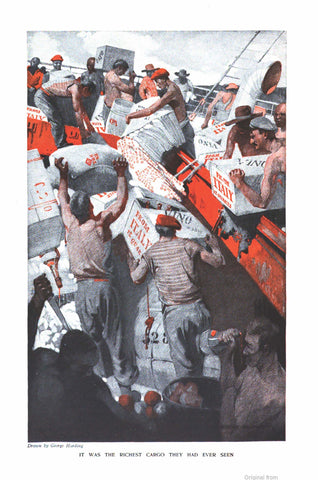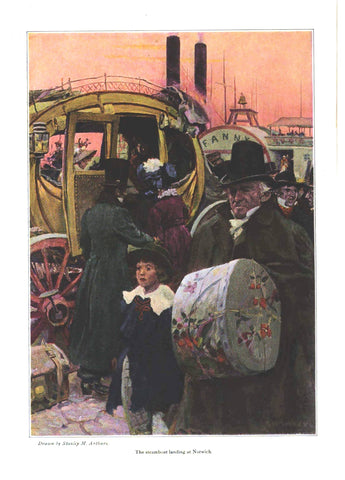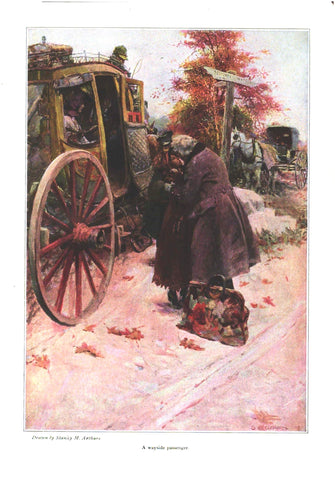Stanley Arthurs story illustration for Scribner's Magazine (1908): a beautifully framed antique
$195.00
"The Evening Mail"
For "The Old Boston Post Road" by the Artist
Scribner's Magazine. Vol. 44, November 1908 Issue
IMAGE INFORMATION
Image Size: H 9.00” x W 6.00”
Matted & Framed: H 16.00” x W 12.00”
Framed Price: $175.00
Packaging and shipping approximately $22.00
This illustration was the final in the set SMA produced for his 1908 Scribner’s magazine article, "The Old Boston Post Road." Like its two companion pieces, it exhibits the characteristics that made the artist successful through his 50-year career.
In the biography that the Director of the Delaware Art Museum prepared for the catalogue that accompanied its retrospective of the artist’s work, Charles Wyrick made these observations concerning SMA’s training and style: "Arthur’s first major published work, First Thanksgiving Day Proclamation, appeared in the December 2, 1899 issue of Harper’s Weekly. Painted and selected for publication under Pyle’s expert supervision, the work demonstrated the influence of Pyle on the young Arthurs—the frozen moment in time, the attention to mood, the regard for historic detail. One can image how carefully Pyle criticized the work while it was in progress for Pyle respected Arthur’s talent, and some say that Arthurs was Pyle’ favorite student."
SMA produced this illustration in circumstances similar to those in 1899. His studio had moved by then into the school building PH built in 1900, and he was sharing space with HP’s other “righthand man,” Frank Schoonover. But Pyle was only a few yards away, working methodically through orderly days in his French Street atelier. In the morning on his way to work, and in the evening on his way home, he would stop in the studios of his students and critique their work.
No doubt the pieces SMA produced for his Scribner’s article pleased his teacher. The canvas is filled with natural and historical detail. The moment the artist portrays here contains physical and mental action, and viewers are drawn into the scene by its emotional drama, which SMA created with his fiery evening sky and the challenge being sounded by the trumpeting coachman. Finally, through the use of slanting lines and contrasting lights and darks, SMA conveys a Pylesque sense of motion. The bustle. The approaching night. The rumbling of coach, the clanking of the harnesses, and the warning of the coachman create tensions that engage the viewer. Where are they going at this late hour? Will they be safe?
The article in which this illustration appeared was the first of two stories SMA wrote and illustrated. One supposes the pictures gained vitality because the artist also created the narrative. Pyle’s greatest instruction to his students was to place themselves within the narrative and make themselves part of the story they were depicting. The moment could not have been, in other words, more vivid in the artist’s imagination.
By 1908, image reproduction technology had advanced into the Age of Color, and it was preferable to publishers and readers alike to see bright colors in story illustrations. The artist complied by creating the scenes for his Post Road article with a red, yellow, and purple palette rather than the dull earth tones Pyle’s students used a few years before. SMA’s picture was reproduced using a four-color halftone photolithographic process. Since the colors are dark in this evening scene, but they are clear and free of bleed overs. We can therefore commend the printer as well as the artist on this reproduction.








